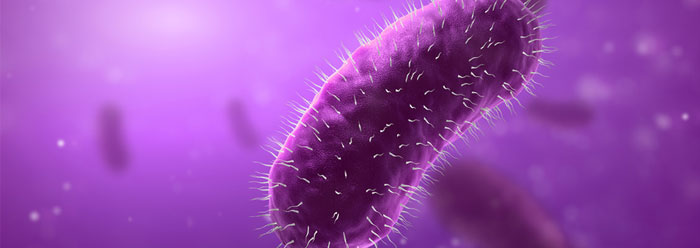Animal and plant cell DNA is so complicated that all the cellular machines that process, regulate, and manipulate it are constantly in need of cellular fuel. In fact, each animal and plant cell uses so much fuel that specialized fuel-production facilities called mitochondria are required.
A new evolutionary study attempted to provide evidence supporting a bacterial origin for mitochondria, but all it really did was beg the question.
Evolutionary scenarios for mitochondrial origins are faced with a problem: The cell must utilize its DNA in order to live. But this in turn requires an energy factory. Without either the energy or DNA factories, the cell would die. Thus, both factories, in full form, are required for plant and animal life.1
Charles Darwin and his contemporaries knew almost nothing of cellular components, or their intricate and interdependent arrangements. They considered cells to be simple, making it easier to imagine that cells were built up through long, slow, gradual, natural processes. But all-or-nothing systems that characterize cells cannot be the result of such gradualism, since a half-developed factory somewhere along its evolutionary development would do a cell no good at all.
Therefore, evolutionists propose that mitochondria resulted from a one-off fusion event that occurred when one bacterium engulfed another. At some point, the engulfed bacterium then supposedly became a mitochondrion.
The little evidence used to support this story, however, is trumped by the overwhelming evidence against it.
For example, the structure and function of bacteria's protein-manufacturing machines have too many core differences from those that perform the same function in plants and animals. So, evolutionists think that the bacteria's version must have morphed into the plant/animal version near the time when the bacteria was supposedly engulfed.
But as molecular biologist Daniel Criswell has shown, the bacterial protein-manufacturing apparatus couldn't function in this scenario because the myriad structural changes required to transform it into the mitochondrial version would render the transitional mitochondrion temporarily useless.2 And without the ability to manufacture proteins in the meantime, the imaginary cell would have died, ending the whole evolutionary experiment.
This kind of scientific problem is systematically ignored, as the recent study illustrates.3
Publishing in Science Reports, an open access journal within the Nature family of journals, researchers claimed that they have identified the modern descendant of the bacterial species that was miraculously engulfed so long ago. However, their whole approach uncritically assumed this evolutionary story to be true, and thus it begged the entire question of mitochondrial origins via an engulfed bacterium.
The researchers compared the DNA sequences of an array of marine microbes with mitochondrial DNA sequences. They purposed to find "evidence for a shared common ancestor."4 But the existence of this "ancestor" is the very question that has not been answered. Besides, isn't good science supposed to present evidence both for and against a particular model so that it can be evaluated in balance?
Perhaps the authors knew that since the evidence against this idea is fatally overwhelming, it was better for the story's survival to ignore such evidence.
To say that "mitochondria share a common ancestor with" bacteria, as these study authors did, begs the question of mitochondrial origins. They identified the most likely candidate for a bacterial source of mitochondria based on similarity of DNA sequences, but they did not identify sequence differences, let alone address whether or not mitochondria could have arisen from an engulfed bacterium in the first place.
If they had, they would have seen that their whole analysis was futile.
References
- Thomas, B. Study Demonstrates Complex Cells Could Not Evolve from Bacteria. ICR News. Posted on icr.org October 28, 2010, accessed July 28, 2011.
- Criswell, D. 2009. A Review of Mitoribosome Structure and Function Does not Support the Serial Endosymbiotic Theory. Answers Research Journal. 2 (1): 107-115.
- There are many other reasons why this endosymbiosis theory is untenable. For example, it provides no realistic way to develop the intricate coordination between DNA inside mitochondria and DNA in the nucleus of its cell. Specific DNA sequences from both sources are required for mitochondrial and nuclear function.
- Thrash, J. C. et al. 2011. Phylogenomic evidence for a common ancestor of mitochondria and the SAR11 clade. Scientific Reports. 1 (13). Posted on nature.com June 14, 2011.
* Mr. Thomas is Science Writer at the Institute for Creation Research.
